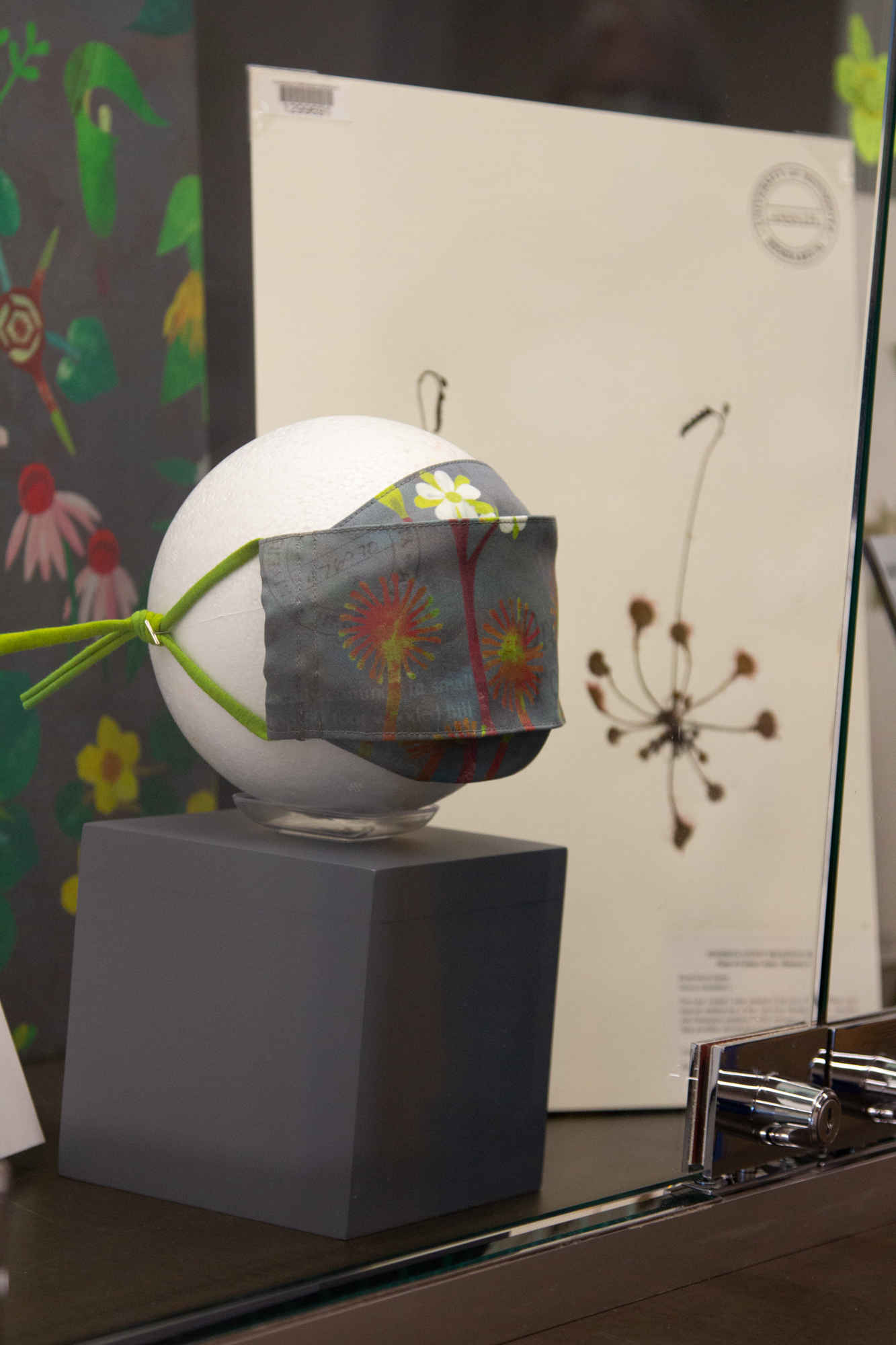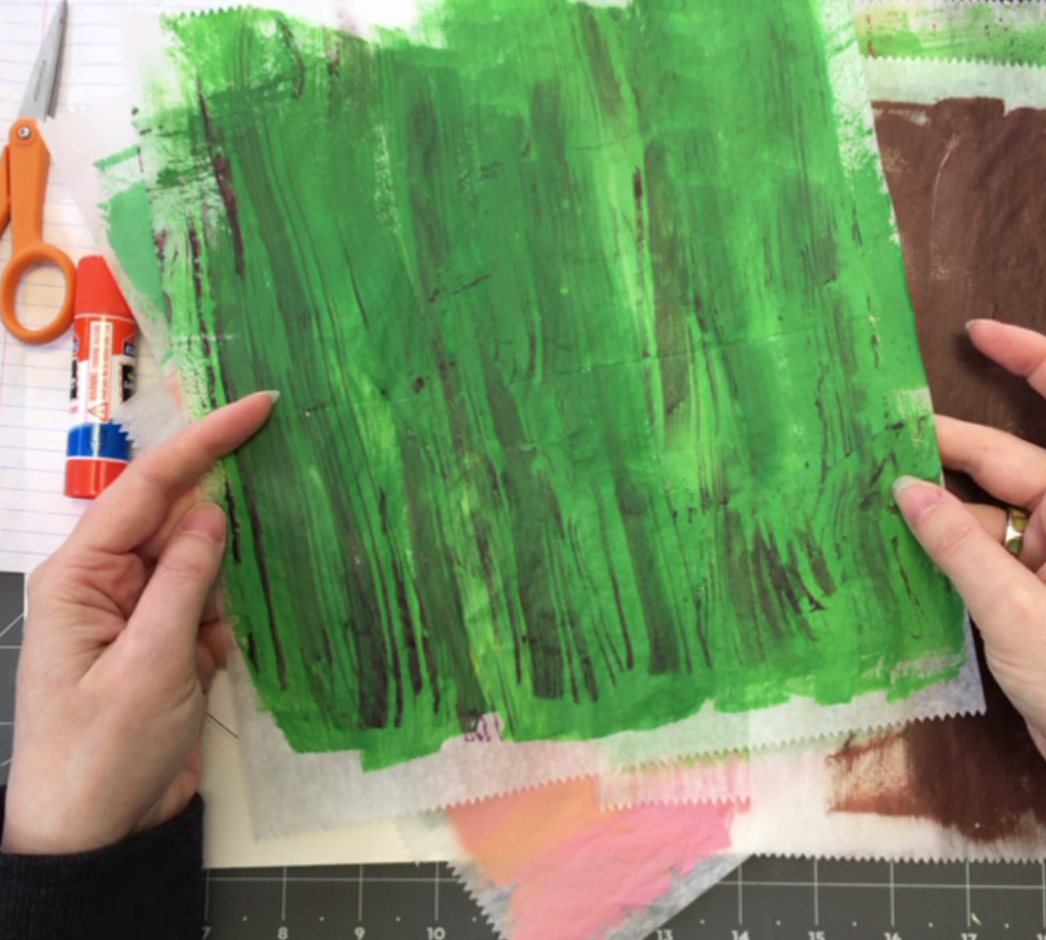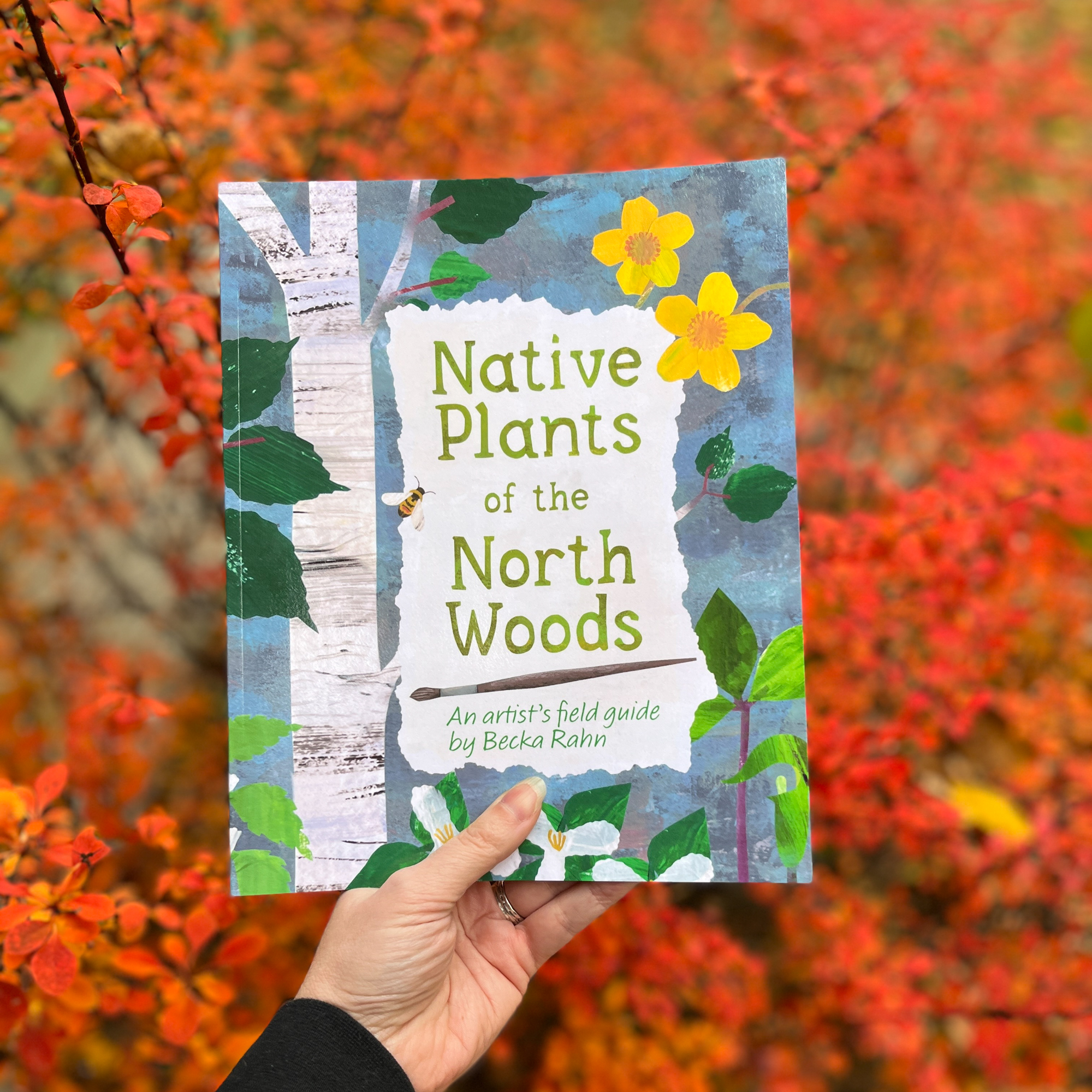I started this collection of native plant illustrations in an art residency I did with The Bell Museum, a local natural history museum. My project was to study their herbarium collection of preserved plants native to Minnesota and create art inspired by it. I wrote all about that project here.
When I started to make my plant illustrations I realized there was something missing from the plant specimen sheets. You can see one pictured behind my mask, shown below. The plant’s habitat and person who collected the plant were well-documented by the museum. However, even though I could study the shapes and sizes of the plant from the preserved sample, they all looked dull, flat, and brown; there was very little information about the color or texture. As an artist, those two qualities are very important to me!

I went in search of more reference material. I studied local field guides and resources from non-profit organizations that focused on native plants, like MNWildflowers.org. I looked for shapes, colors and tiny details that make each plant unique. By using these details to craft a more complete picture of each plant, I could bring them back to life.

I used hand-painted deli paper to make each cut paper illustration. Deli paper might not seem like an obvious art material, but it’s thin and strong so it’s easy to cut out fine details and make layered shapes. As I painted, I designed one-of-a-kind papers for my plants. I blended colors and created textures with the brush. I drew stripes and speckles. I even cut out a paper alphabet to make a custom typeface for my plant labels. I chose to make the plants larger-than-life rather than try to make things actual size because some of them are tiny! I really wanted the reader to be able to see the details that I would never be able to render in cut paper when the blossoms were only 1/4 inch wide. I also decided to picture each plant as you would see it in early summer, so most of the pictures show the flowers you would see in the summer time but not the berries or seed pods you might see in the autumn.

For the final project for the residency, I scanned and printed the illustrations on to fabric. I made a set of face masks. I was inspired by native plants with medicinal properties and how, like face masks, these plants can help protect us from disease. The museum displayed a small collection of these masks, but I knew that exhibit was just a seedling, so to speak.
The seedling grew into this book: an artist’s field guide to native plants. Native Plants of the North Woods features 21 different plant species and 11 native pollinators in a family-friendly field guide. Each page has details and quirky facts about each kind of plant and is geared at an upper-elementary age reading level. I started studying Minnesota species because that’s where I live. My parents are from upstate New York and remember the plants they grew up with too. As I showed each finished illustration to my mom, we realized that many are common to the north woods all the way from Minnesota to New York. She remembers walking through the woods with her parents, finding huge patches of trillium and popping the seed pods of touch-me-nots. I hope you will take a walk in the woods where you live to see if you can find these plants. And I hope you’ll make a little art inspired by them too.

